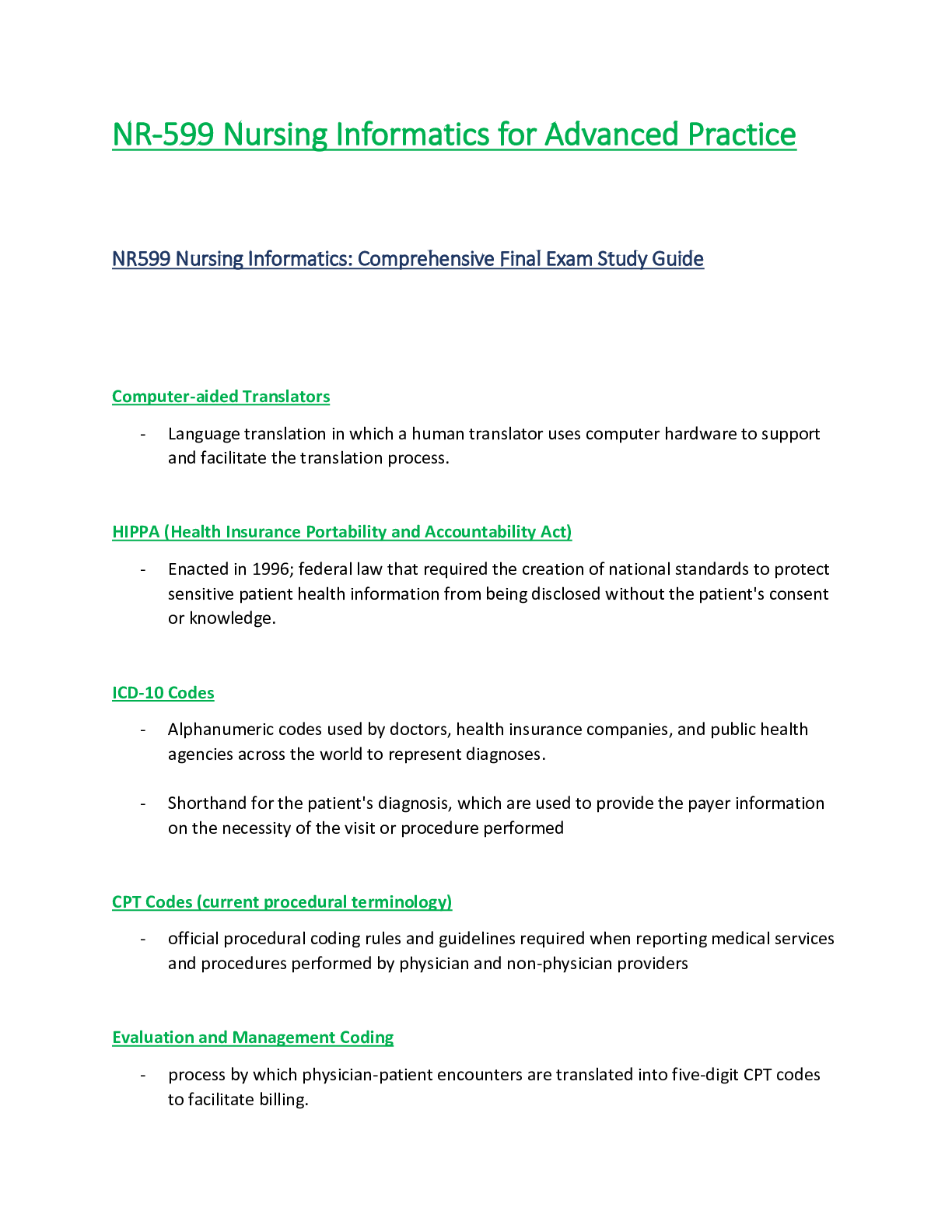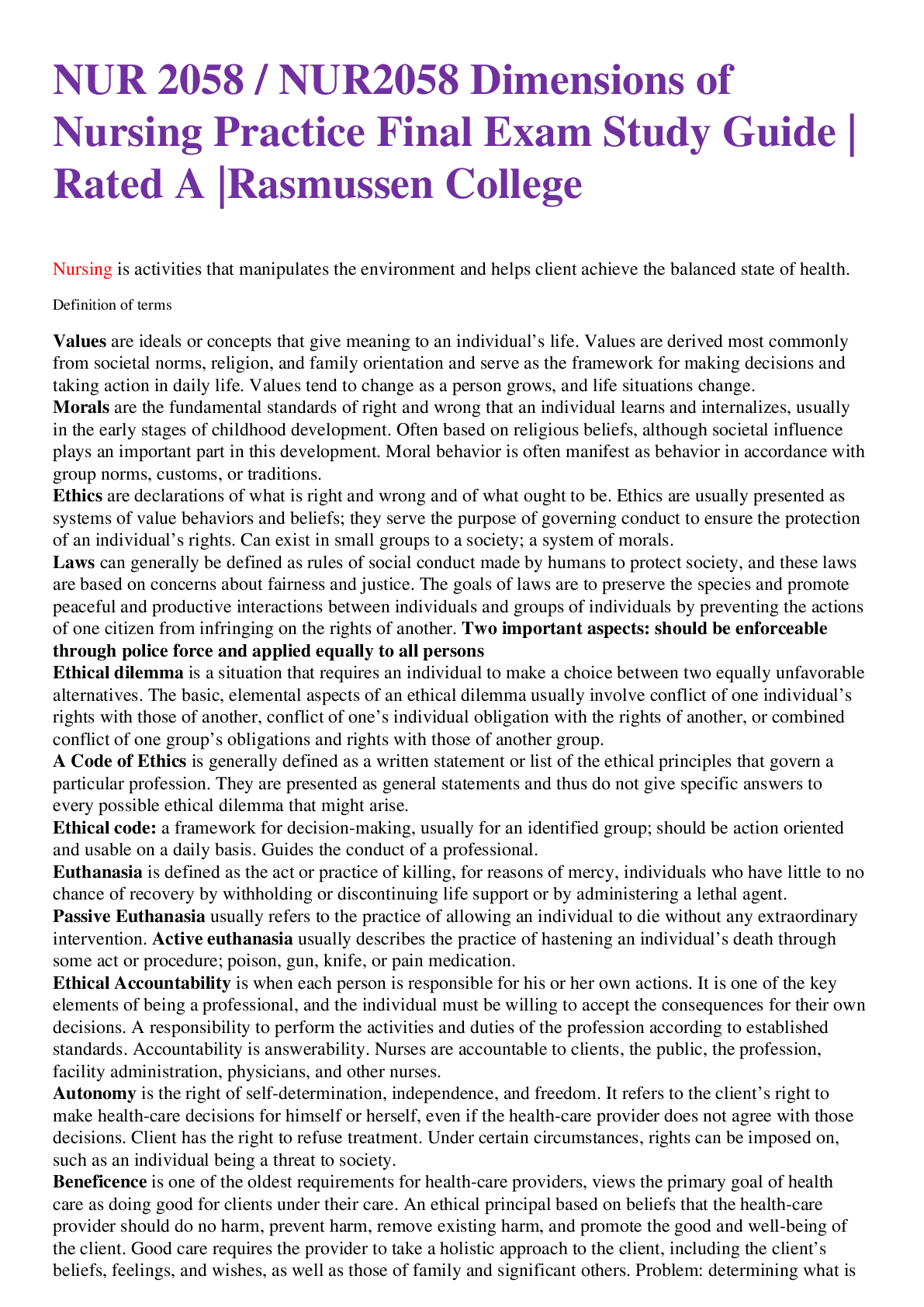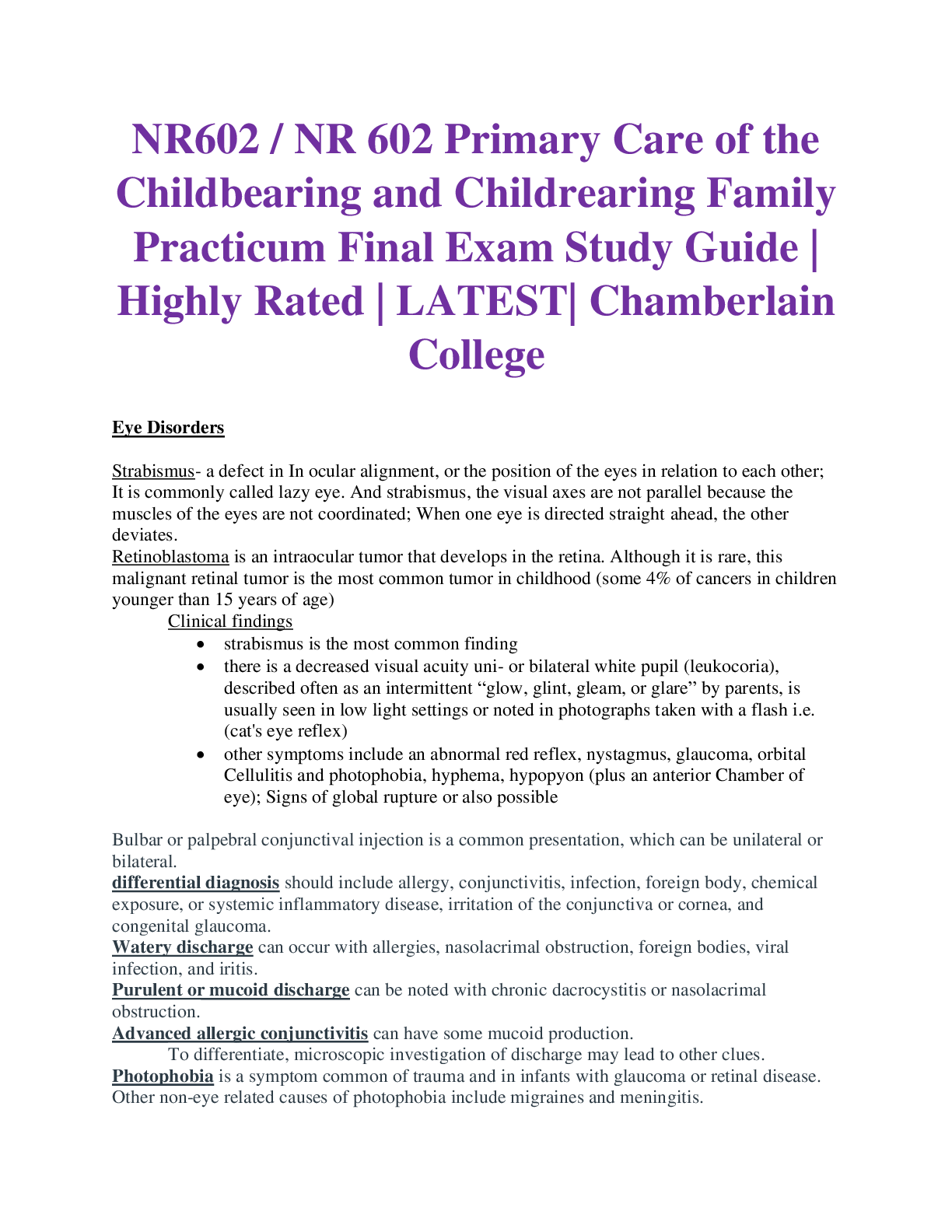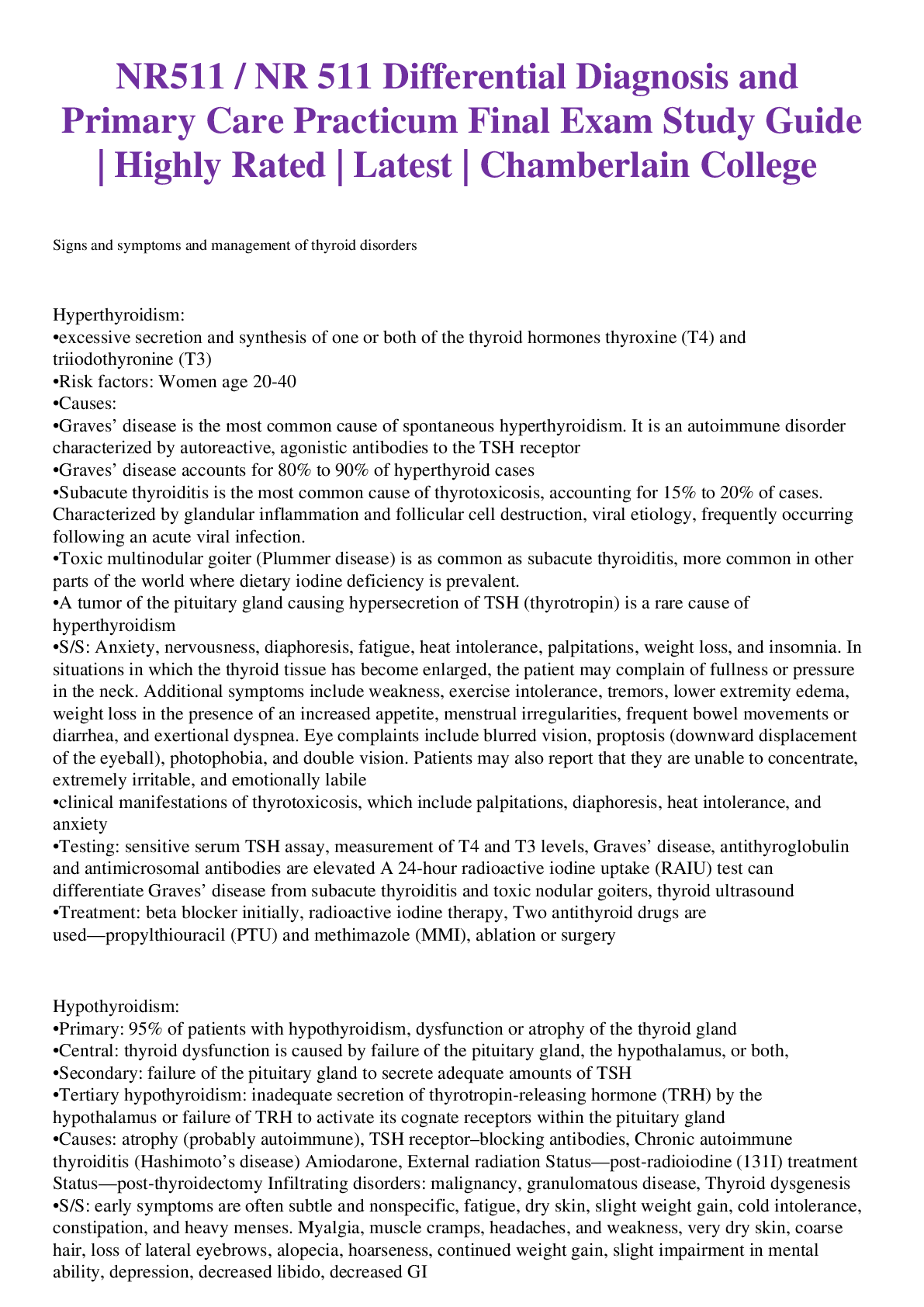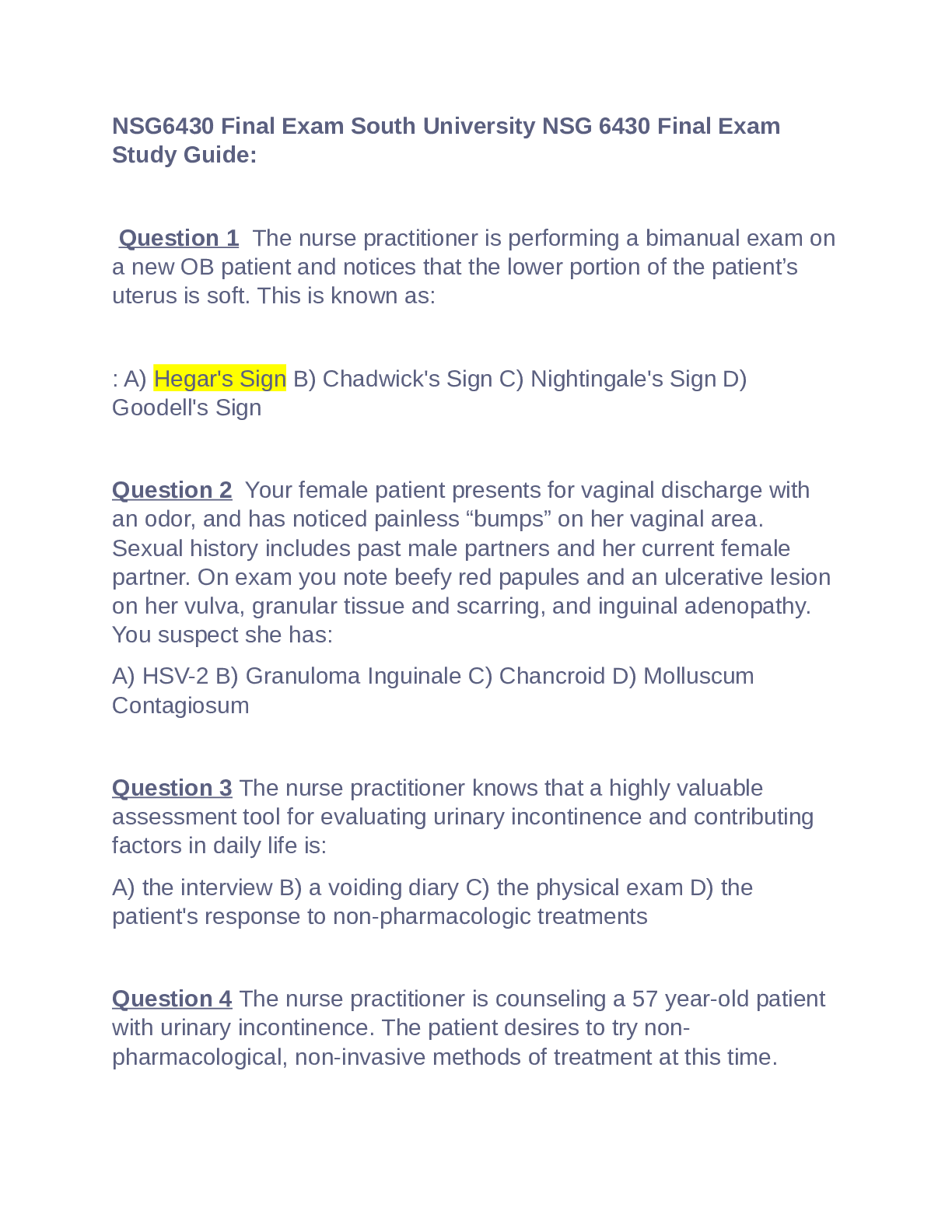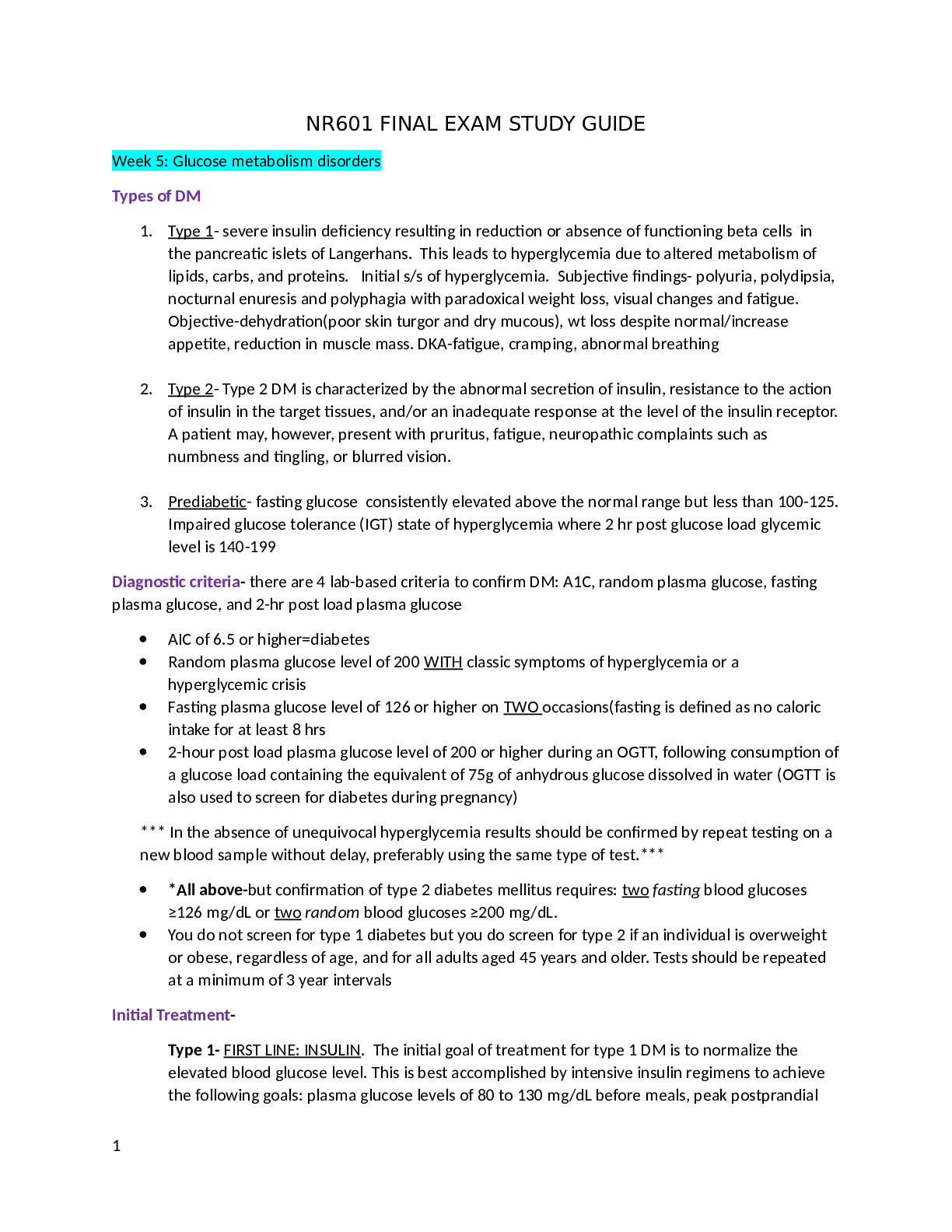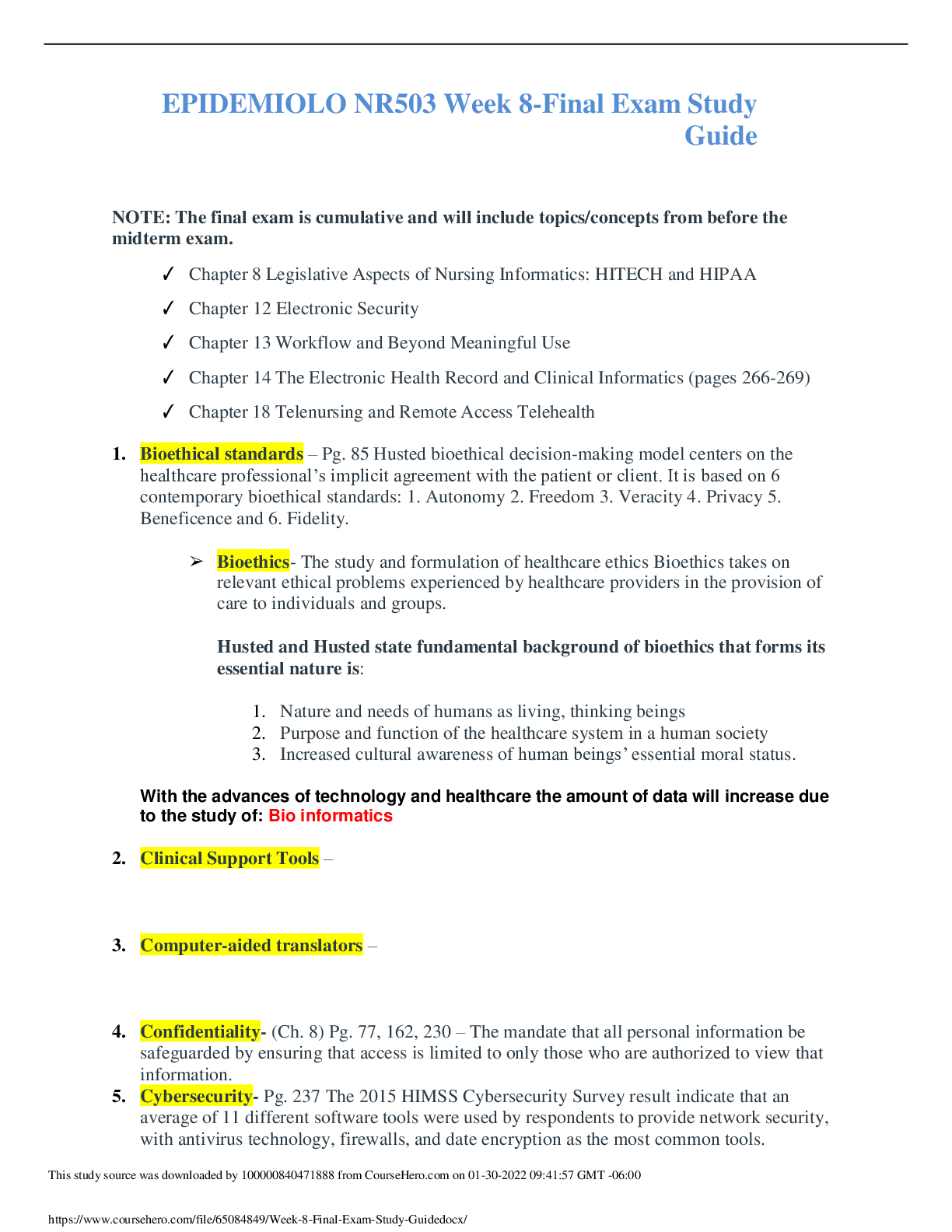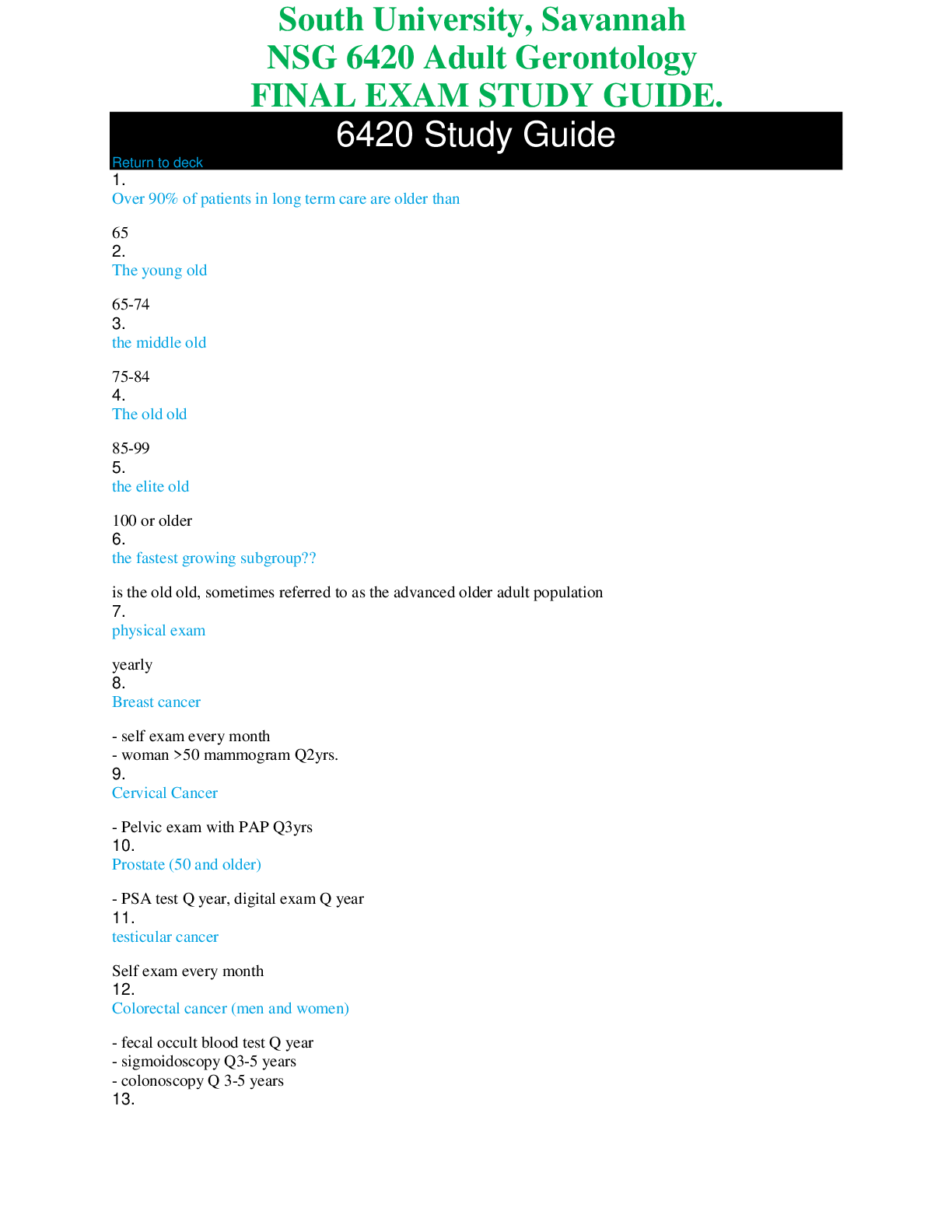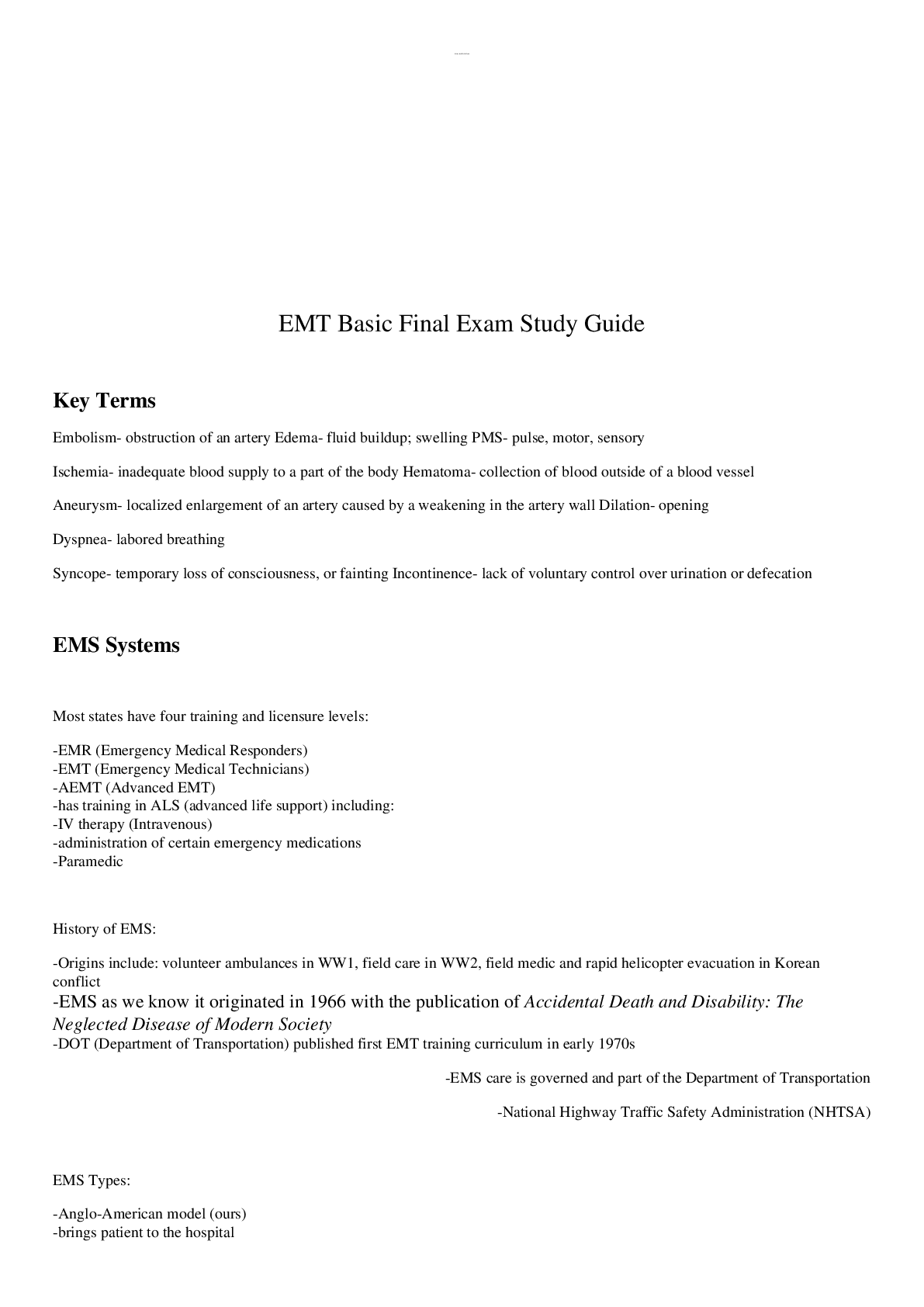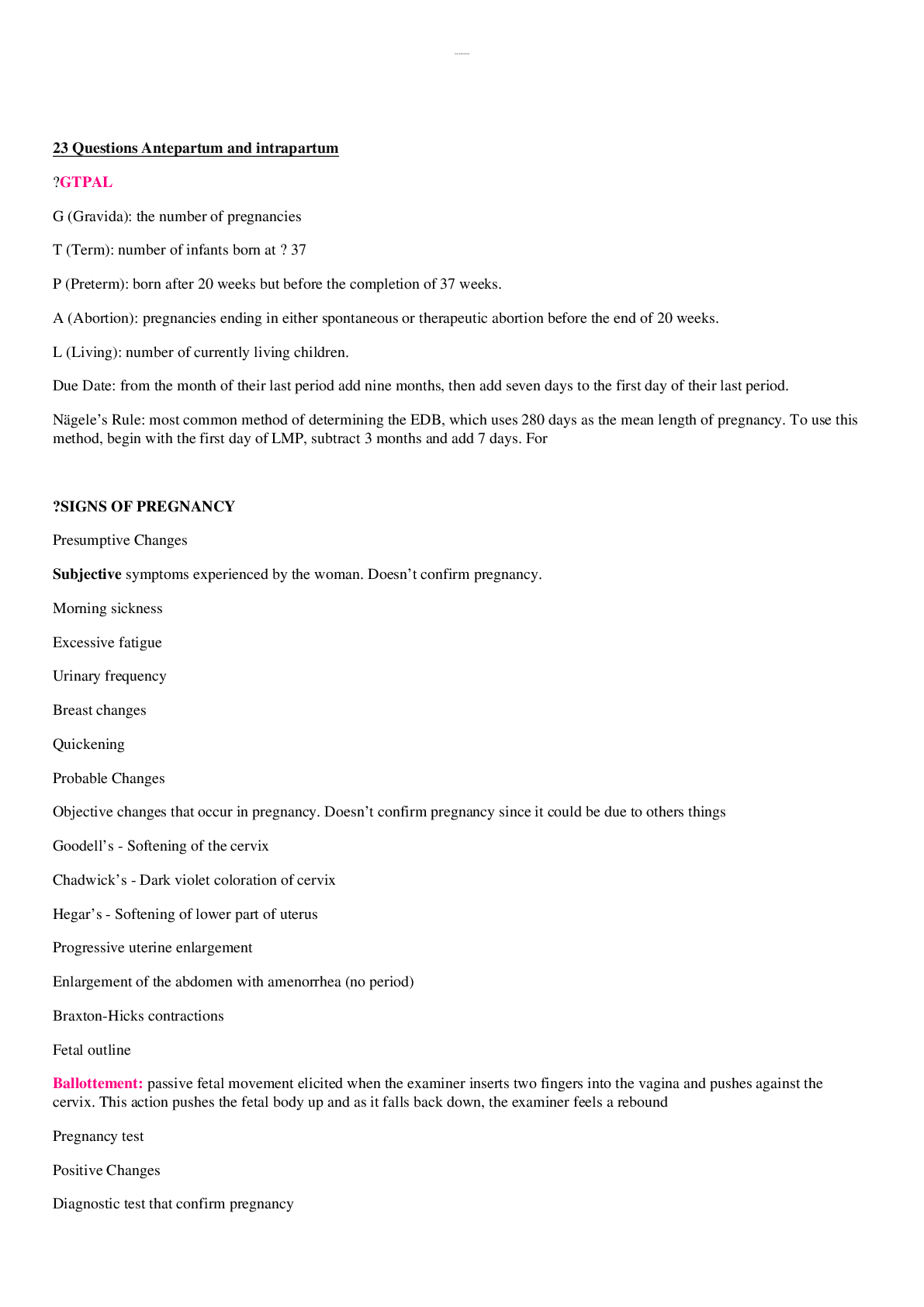*NURSING > STUDY GUIDE > NR 283 FINAL EXAM STUDY GUIDE (All)
NR 283 FINAL EXAM STUDY GUIDE
Document Content and Description Below
Neurological • Clinical Manifestationsfor alterationsin arousal o Changes in LOC is the most critical piece on information we have o LOC: are early changes, first thing you will see when somethin... g goes wrong neurologically o Pattern of breathing: assess the rate, rhythm and pattern; can have changesin any of those. Respiratory rate can be low or labored. Could have Cheyne stroke respirations o Pupillary Changes: biggest thing to look for fixed and dilated pupils. (Pupils are wide and don’t move). This is not good, its sign of brain hypoxia or ischemia. o Oculomotor Responses: just looking for changes and or things your not supposed to have. ▪ Resting,spontaneous, reflexive eye movements o Motor Responses: Can help evaluate level of dysfunction and damaged side ( just looking for changes or things that shouldn’t be there) ▪ Purposeful, inappropriate, or not present o Consciousness: state of awareness of oneself and the environment ▪ Arousal: state of being awake and being able to respond ▪ Awareness: state of being aware ▪ These are all mediated by the RAS, in brainstem ▪ If you get damage to cerebrum then the RAS will maintain you in a vegetative state- will keep you alive if something happens severely to your brain tissue. o Structural: could be due to a tumor, bleeding in the brain o Metabolic: anything that effectsthe metabolism like hypoxia, electrolyte changes, medications or drugs o Psychogenic: patients with psychiatric diseaseslike schizophrenia o Outcomes: Long-term disabilities, or patients could die. • Brain Death: body can no longer maintain internal homeostasis o Occurs when the brain has been damaged so severely that it can never recover. Death or damage to the brain stem. These patients are considered legally dead • Cerebral death : irreversible damage to the cerebrum but the cerebellum and brain stem maintain intact- because the cerebellum and brainstem are intact, all vitals can be maintained, your still alive, just not where you want to be o 4 types: o Remain in coma for life: they will have vital signs, but will not move, talk or open their eyes etc. o Emerge into a persistent vegetative state: the only thing they can do is open their eyes and have normal sleep patterns. Will have vital signs [Show More]
Last updated: 1 year ago
Preview 1 out of 31 pages

Reviews( 0 )
Document information
Connected school, study & course
About the document
Uploaded On
Jan 08, 2022
Number of pages
31
Written in
Additional information
This document has been written for:
Uploaded
Jan 08, 2022
Downloads
0
Views
38

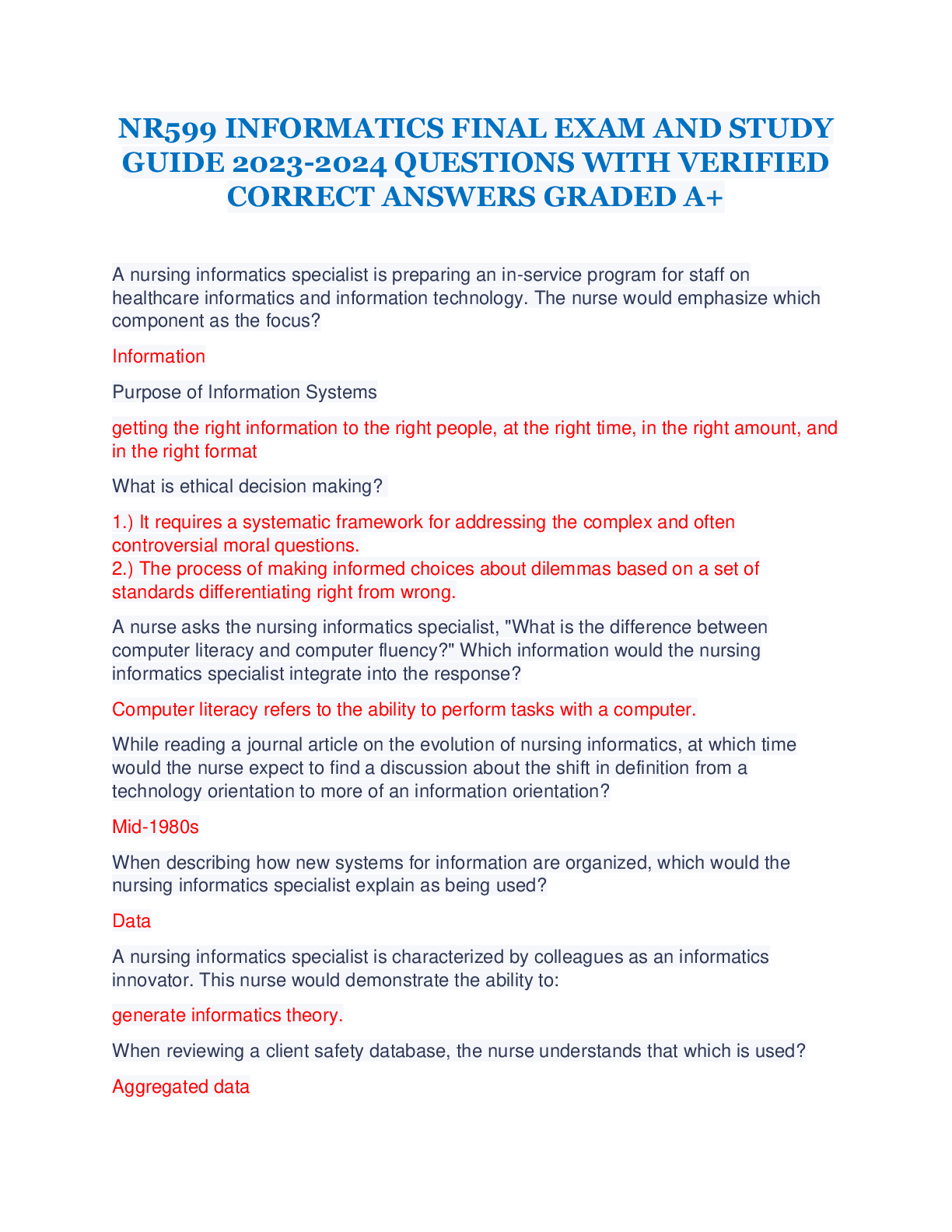
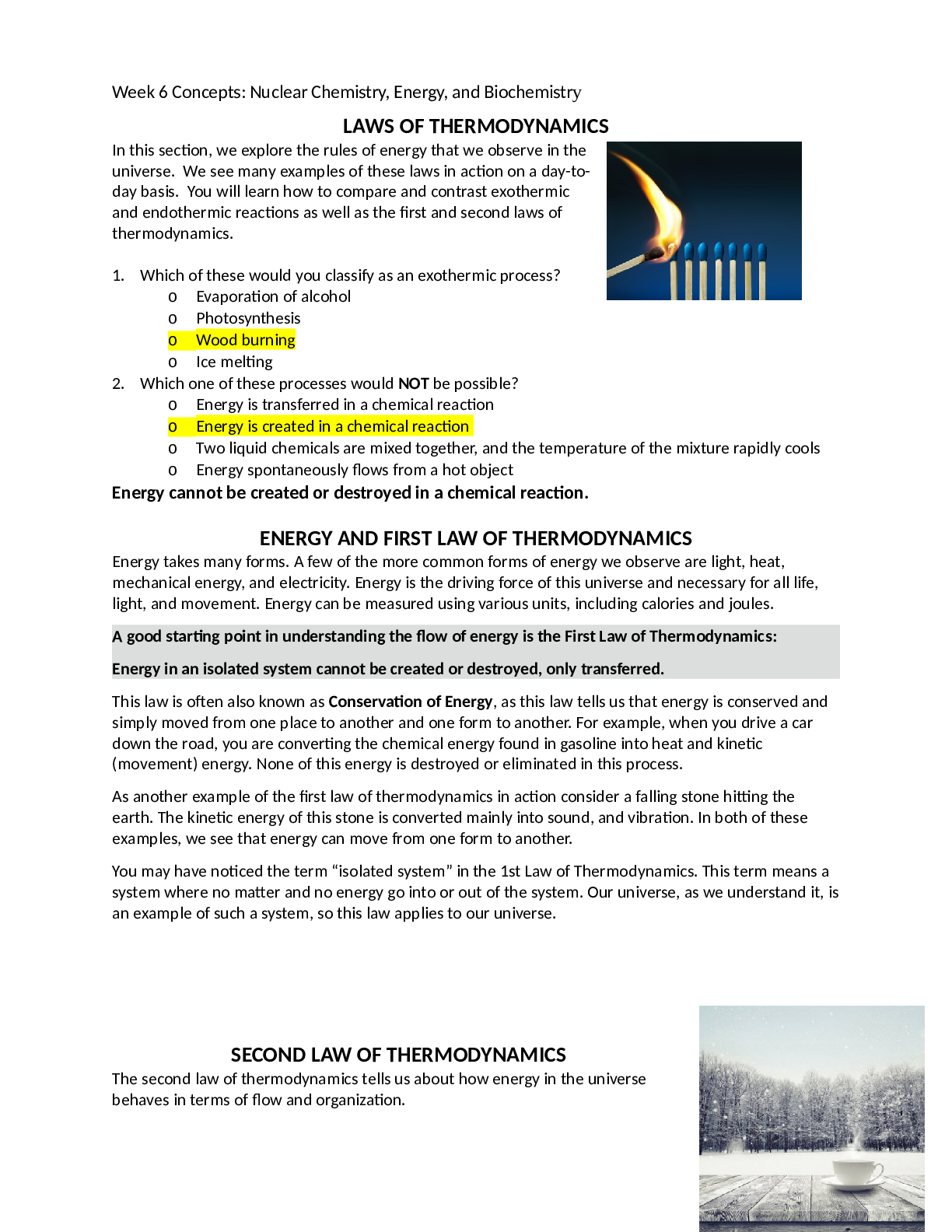
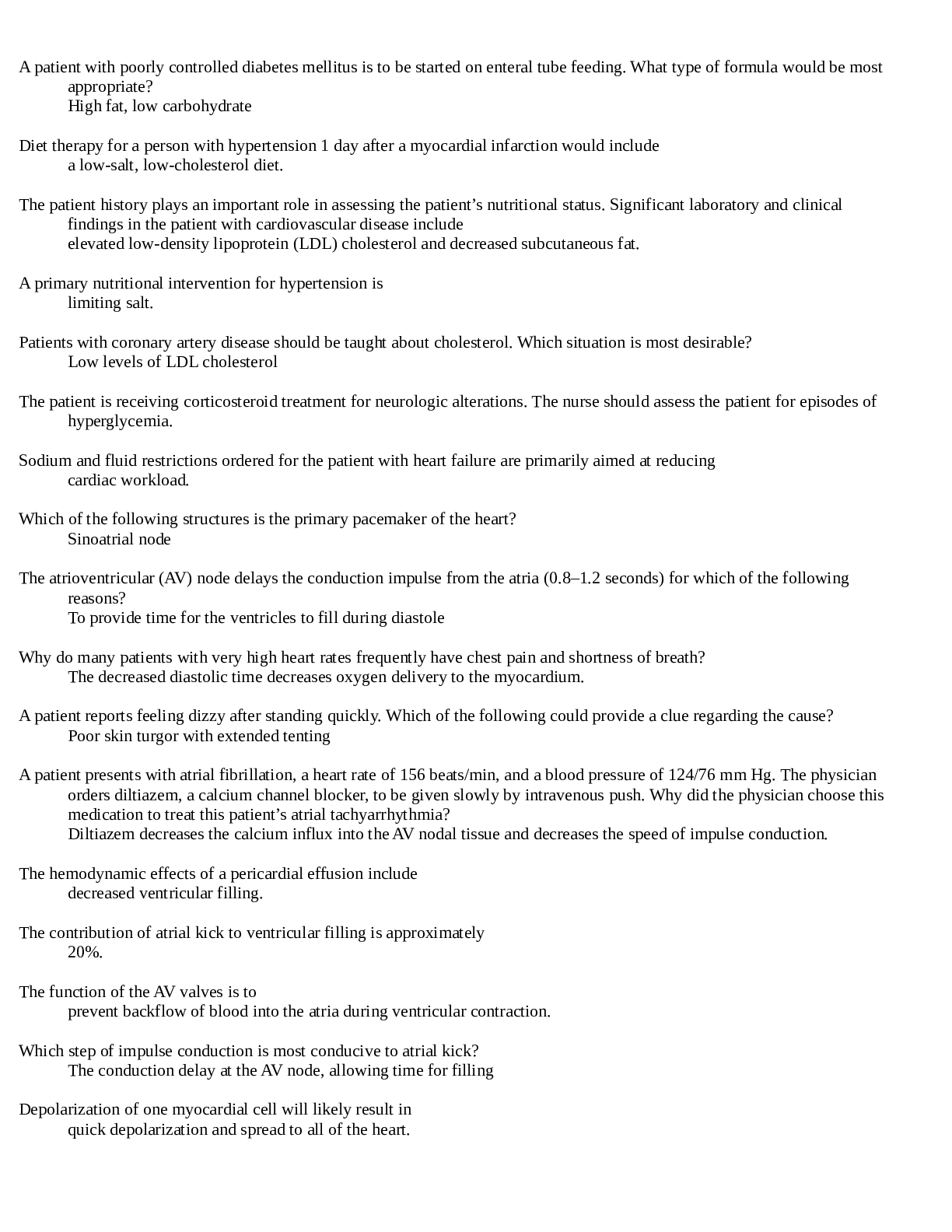
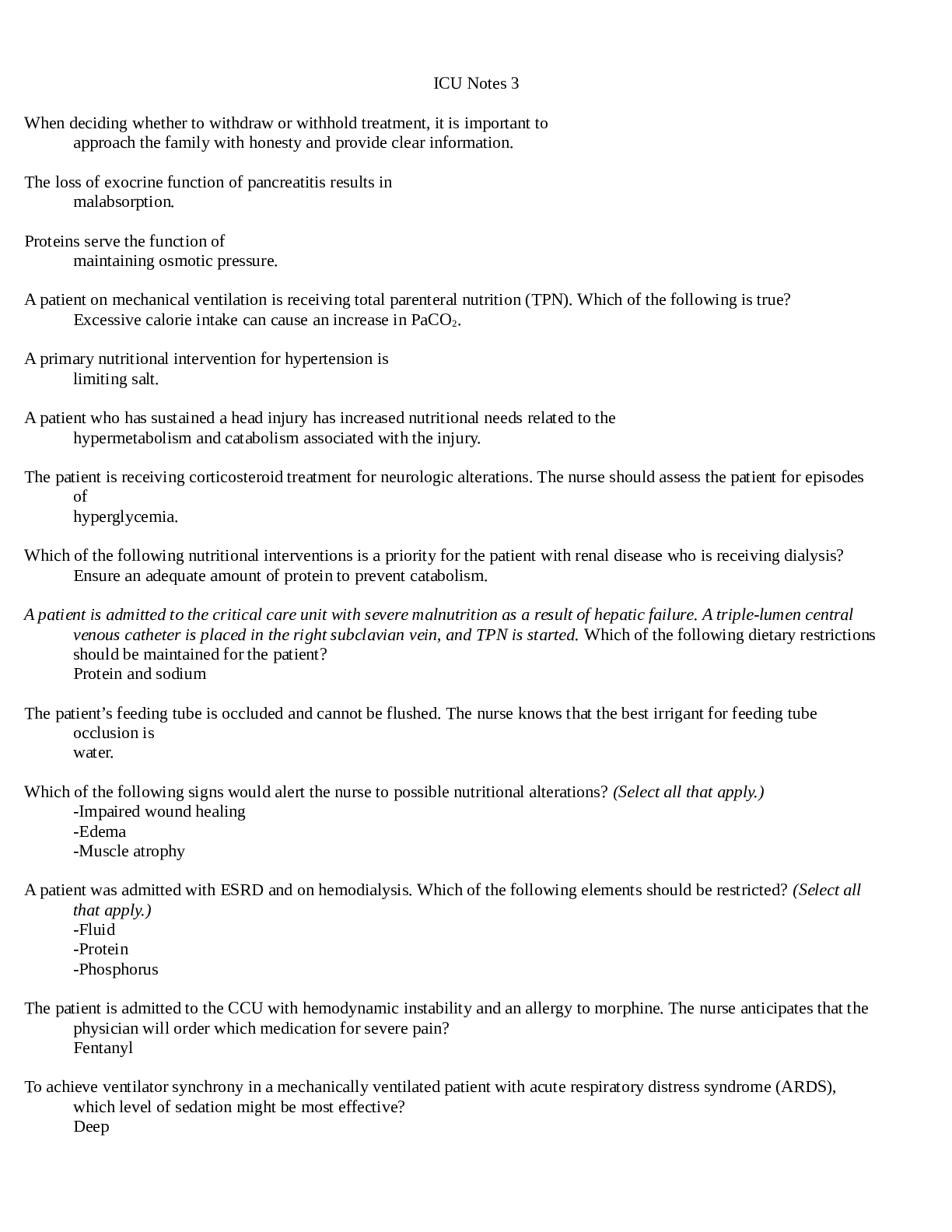

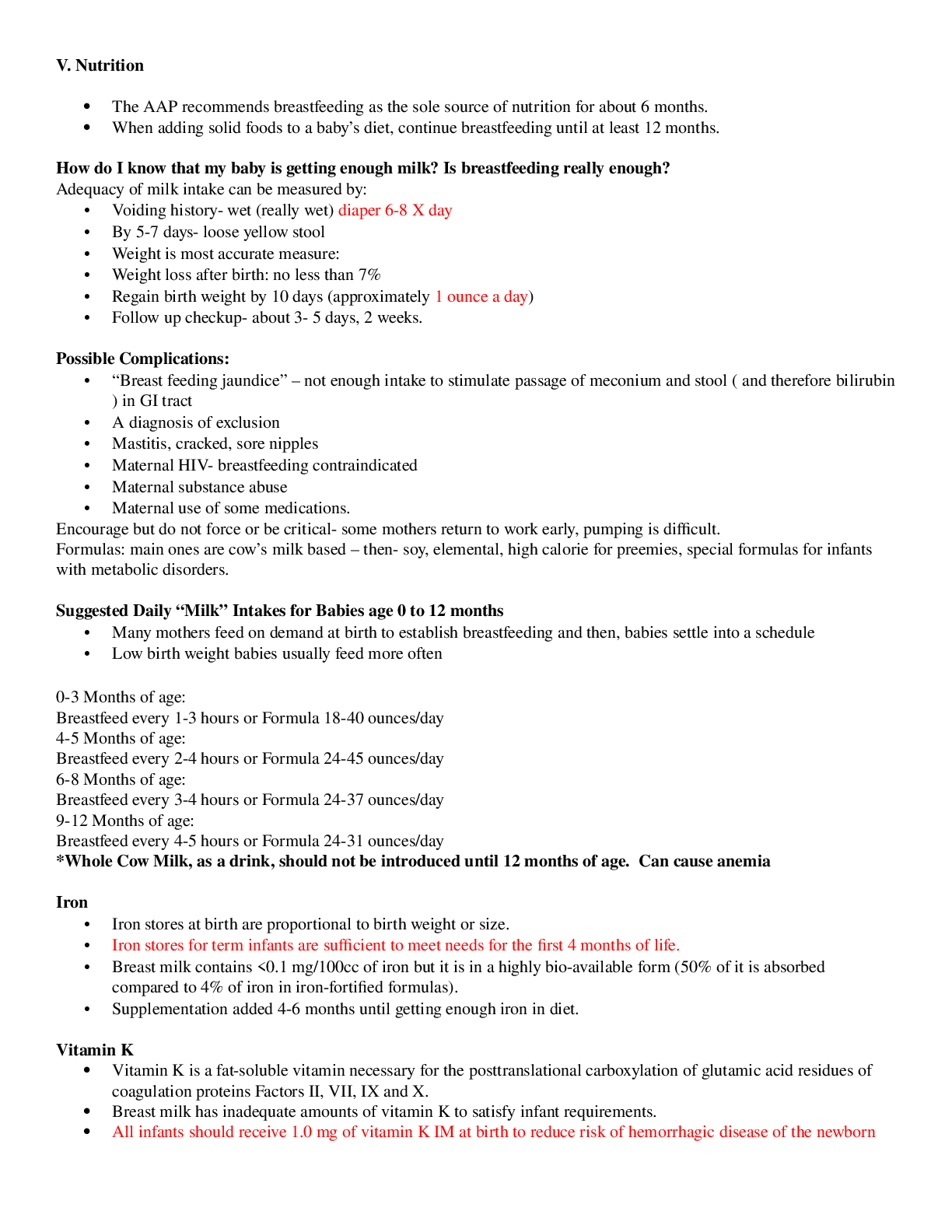



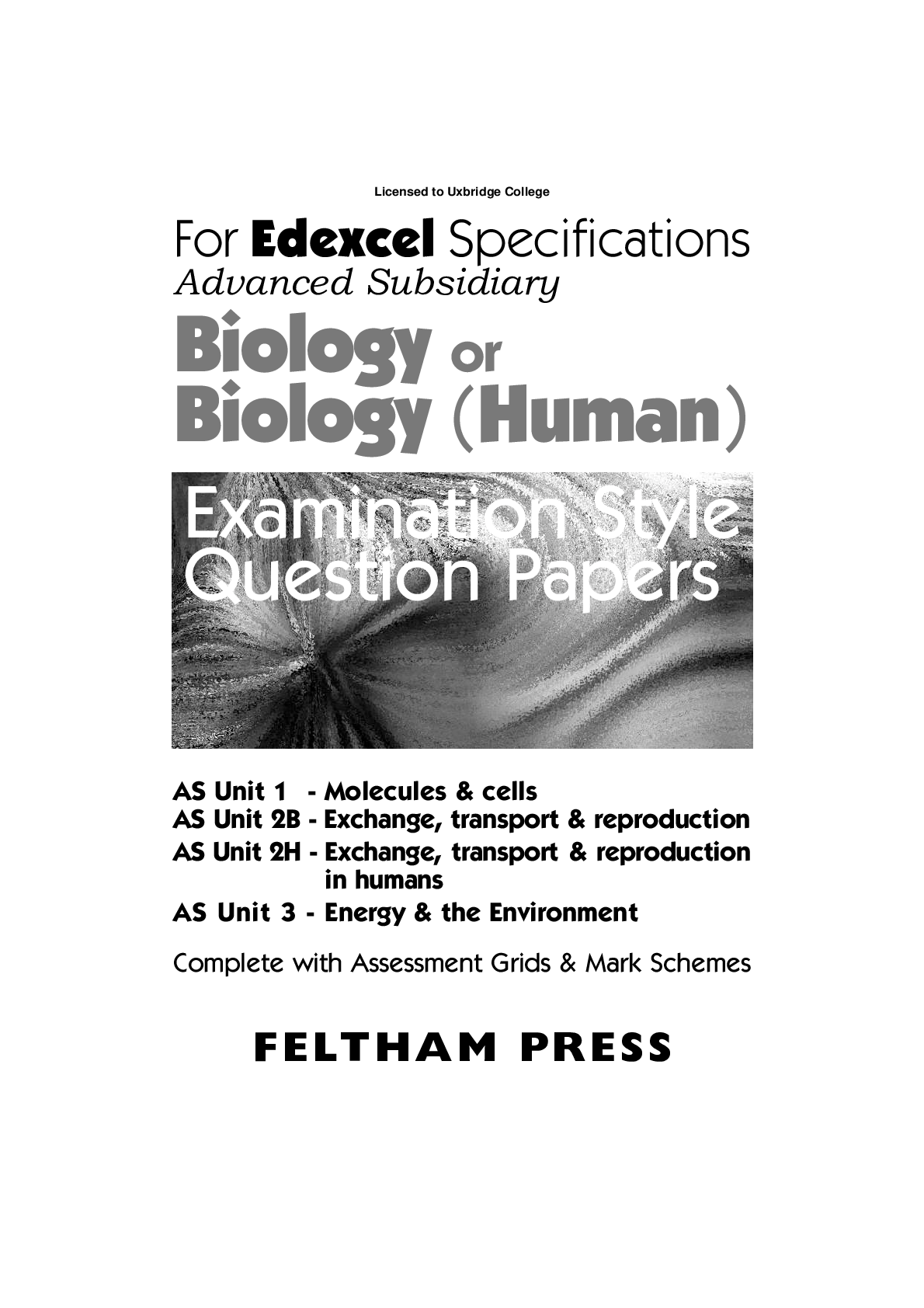


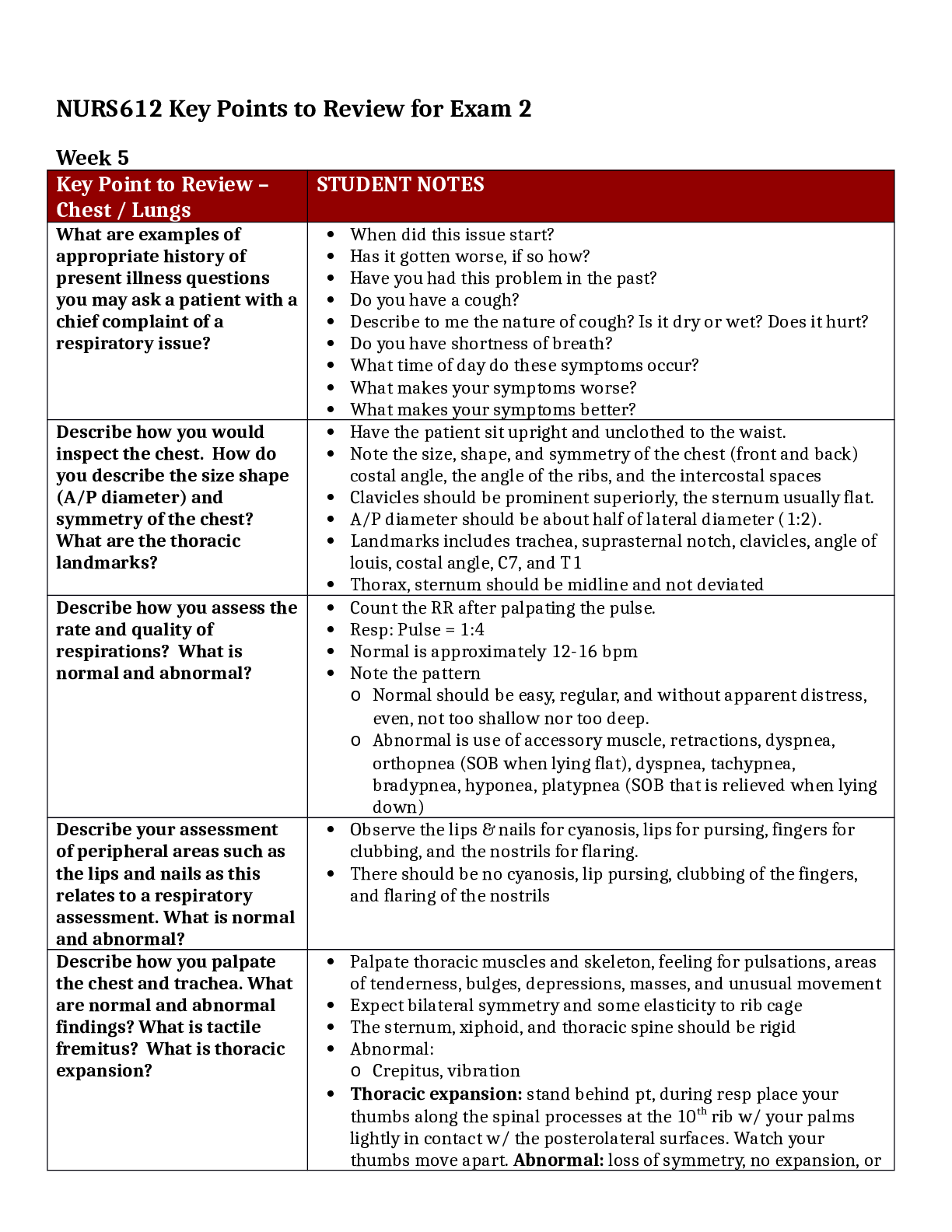
.png)

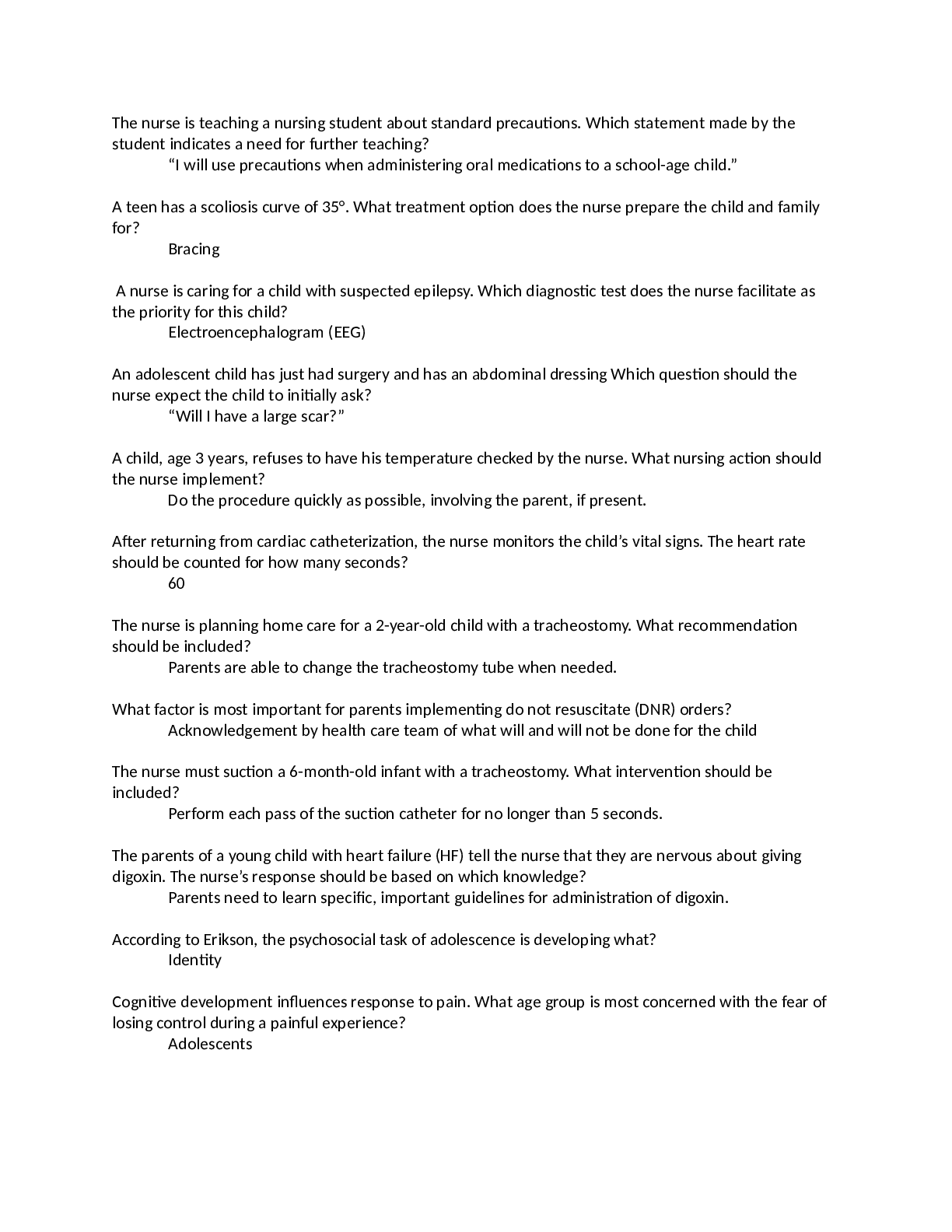
 Rasmussen College.png)
